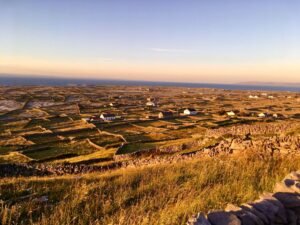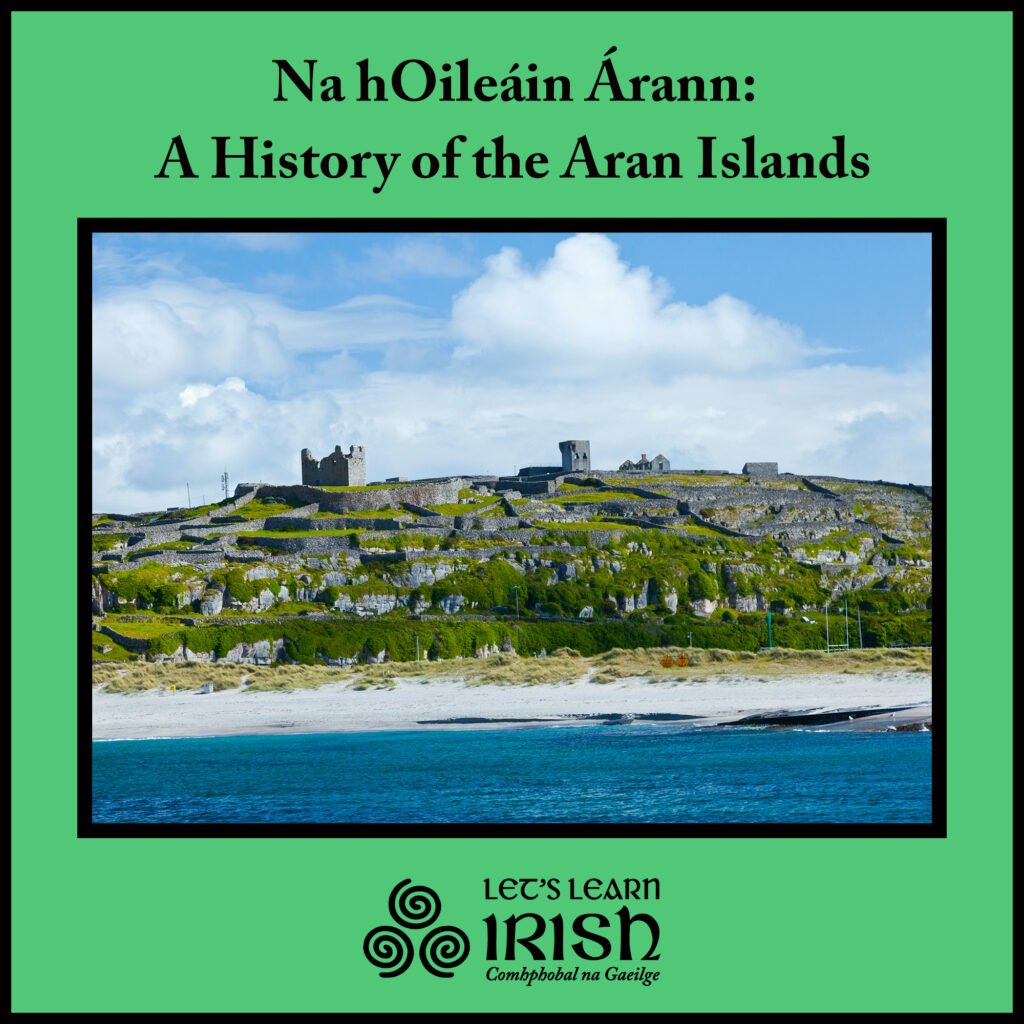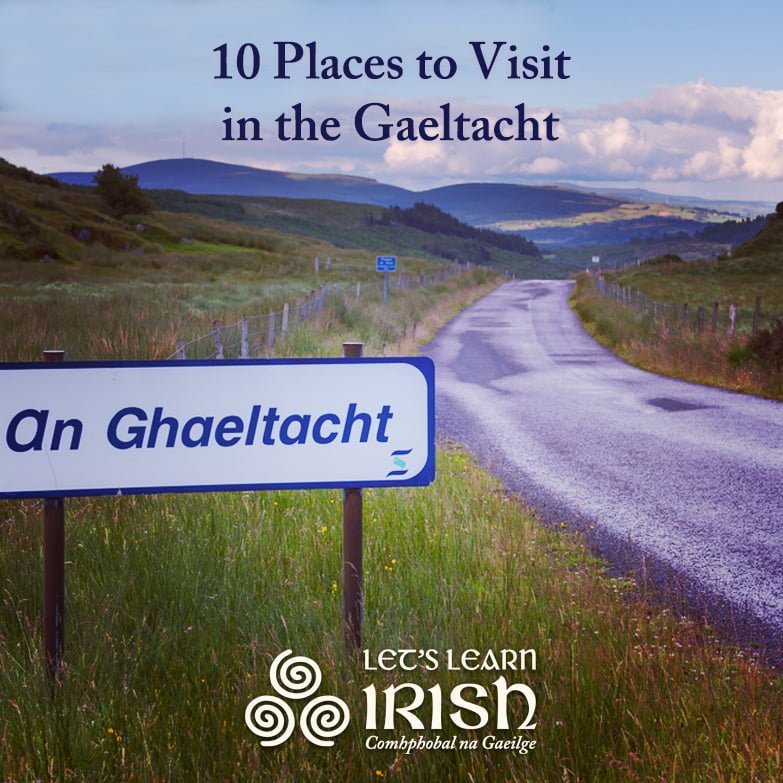Mairtín Ó Díreán: A Voice of the Gaeltacht in Modern Irish Poetry
 Long before they attracted tourists from around the world, the Aran Islands have been an anchor of Irish identity. In the times of the Cromwellian conquest, they have offered partial respite to those looking to escape the control of the English, and since then have often been considered keepers of Ireland’s tradition and culture. With that in mind, it is not surprising that they would produce one of the country’s most important poets in Mairtín Ó Díreán, who himself was a defender of a traditional Ireland and a dedicated activist of its native language. His work was not only considered revolutionary in the 1940s and 1950s, but remains a cornerstone in online Irish language courses.
Long before they attracted tourists from around the world, the Aran Islands have been an anchor of Irish identity. In the times of the Cromwellian conquest, they have offered partial respite to those looking to escape the control of the English, and since then have often been considered keepers of Ireland’s tradition and culture. With that in mind, it is not surprising that they would produce one of the country’s most important poets in Mairtín Ó Díreán, who himself was a defender of a traditional Ireland and a dedicated activist of its native language. His work was not only considered revolutionary in the 1940s and 1950s, but remains a cornerstone in online Irish language courses.
The Early Influences of Mairtín Ó Díreán
Born in 1910 on Inis Mór, a Gaeltacht and the largest of the Aran Islands, Mairtín Ó Díreán spoke only Irish until he was a teenager. The experience of growing up in a traditional Irish-speaking community became the basis of much of his poetry and beliefs.
When he was eighteen Ó Díreán left the island and moved to Galway City, where he became a civil servant. There, he worked for the Department of Posts and Telegraphs, while also writing for, and acting in, Irish-language stage plays. After nine years in Galway, Ó Díreán moved to Dublin, where— not long after—he heard a lecture by Tadhg Ó Donnchadha, a writer and poet active in the Gaelic Revival. Ó Díreán was so inspired by Ó Donnchadha that he decided then and there to dedicate his life to Irish language literature.
The Poetry of Mairtín Ó Díreán
Mairtín Ó Díreán published his first book of poetry, Coinnle Geala (Bright Candles), in 1942, followed by Dánta Aniar (Aniar Poems) in 1943. Both collections were printed at his own expense. By the time his third book was ready, however, a new publishing house for modern literature in Irish, Sáirséal agus Dill, was active. In 1949, his collection Rogha Dánta (Selected Poems) was one of the first books Sáirséal agus Dill published. Ó Díreán wrote and published up to his death in 1988. He was the author of thirteen poetry collections and one book of essays.
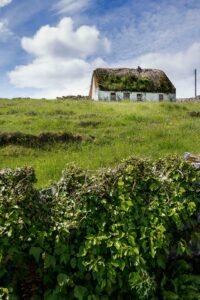 Ó Díreán is credited, along with his contemporaries Seán Ó Ríordáin and Máire Mhac an tSaoi, for breathing new life into Irish language modernist poetry. While other writers of the Gaelic Revival took up older and more structured forms of verse, often those developed in Ireland centuries ago that involved strict meter, Ó Díreán instead preferred to write in a metered free verse. While also grounded in the Irish tradition of poetry, he still looked to other culture’s poets for influence, one of which he often alluded to being T.S. Eliot. Additionally, while other revivalist poets used an older, more classical style of language, Ó Díreán wrote in the modern Irish that he grew up speaking on the islands.
Ó Díreán is credited, along with his contemporaries Seán Ó Ríordáin and Máire Mhac an tSaoi, for breathing new life into Irish language modernist poetry. While other writers of the Gaelic Revival took up older and more structured forms of verse, often those developed in Ireland centuries ago that involved strict meter, Ó Díreán instead preferred to write in a metered free verse. While also grounded in the Irish tradition of poetry, he still looked to other culture’s poets for influence, one of which he often alluded to being T.S. Eliot. Additionally, while other revivalist poets used an older, more classical style of language, Ó Díreán wrote in the modern Irish that he grew up speaking on the islands.
The early work of Ó Díreán often calls back to his upbringing on Inis Mór. It exulted the traditional rural culture found there and mourned what he saw as its passing. Both in interviews as well as in poetry, he laments the parts of his life spent in a dreary urban office, and often contrasted the two existences that he had experienced. One of Ó Díreán’s most famous poems, “Stoite” (“Uprooted”), seems to speak directly to his own emigration, being “uprooted from ancient roots” and finding himself “walking the street lonely in the big city.”
Another reoccurring preoccupation in Ó Díreán’s poetry is his elevation of traditional mores. While some poets of his time began to rail against the Catholic Church, Ó Díreán instead believed that Ireland was straying too far from Christian values. His later work contended with the growing secularization of Ireland, which he partly attributed to influence from the United States, as well as English-speaking parts of Ireland having lost their cultural ethos. Despite his poetry being considered daring and revolutionary in form, Ó Díreán’s personal beliefs were very much rooted in traditional conservatism. He believed that the decline in the use of the Irish language consequently led to a cultural deterioration, and therefore continued to actively promote the language throughout his life.
Role in Online Irish Language Learning
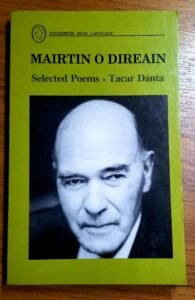 The poetry of Mairtín Ó Díreán is often introduced in online Irish courses, as well as in courses in school, and for good reason. The textual language of the poems is typically simple, even if they are latent with meaning and subtext. Because of this, he is often considered a poet accessible to Irish learners, even if they are not yet fluent. While working on advanced language skills, learners can gain a cultural context of the country—particularly as Ó Díreán saw it during his lifetime, as well as develop an appreciation for Ireland’s literary heritage. Naturally, there’s a justified feeling of accomplishment in reading one of Ireland’s most important poets in Irish, as well as perhaps motivation to continue the pursuit of the language.
The poetry of Mairtín Ó Díreán is often introduced in online Irish courses, as well as in courses in school, and for good reason. The textual language of the poems is typically simple, even if they are latent with meaning and subtext. Because of this, he is often considered a poet accessible to Irish learners, even if they are not yet fluent. While working on advanced language skills, learners can gain a cultural context of the country—particularly as Ó Díreán saw it during his lifetime, as well as develop an appreciation for Ireland’s literary heritage. Naturally, there’s a justified feeling of accomplishment in reading one of Ireland’s most important poets in Irish, as well as perhaps motivation to continue the pursuit of the language.
The Legacy of Mairtín Ó Díreán
The poetry of Mairtín Ó Díreán proved the Irish language to be a capable and justifiable medium for the exploration of form, producing revolutionary work that paved the way for future poets such as Nuala Ní Dhomhnaill, Liam Ó Muirthile, and Louis de Paor. The innovation of his work helped elevate the Irish language on the global stage, garnering admiration for his poetry not just in Ireland, but also abroad. As Irish poet Desmond Egan stated in a lecture given after Ó Direáin’s death, “Ó Direáin’s genius stands revealed—to the extent that we must look abroad for poets with whom his achievement might best be compared; to Spain and Antonio Machado’s sweet intensity; to Russia and Akhmatova; to Germany and the bittersweet music of Heinrich Heine.”
 Ó Díreán was considered one of the greatest servants of the Irish language of his time, a commitment that went beyond just his poetry. In the eighties, as an older man, Ó Díreán crossed the “hard border” to give a lecture in the Gaeltacht Quarter of West Belfast. In a time of paramilitary conflict, he entered an area and committed an act that very well could have attracted violence. Fortunately, his poetry reading at the Cumann Chluain Ard, an urban language revival club, occurred without incidence.
Ó Díreán was considered one of the greatest servants of the Irish language of his time, a commitment that went beyond just his poetry. In the eighties, as an older man, Ó Díreán crossed the “hard border” to give a lecture in the Gaeltacht Quarter of West Belfast. In a time of paramilitary conflict, he entered an area and committed an act that very well could have attracted violence. Fortunately, his poetry reading at the Cumann Chluain Ard, an urban language revival club, occurred without incidence.
Ó Díreán was the recipient of An Chomhairle Ealaíon (The Arts Council Awards) in1964 and 1971, as well as the Butler Prize in 1967. In 2003, TG4 and Bord Scannán na hÉireann (Irish Film Board) produced a documentary on his life titled An Charraig Stoite (The Uprooted Rock).

One of the many rewards of pursuing the Irish language is the opportunity to read the work of Mairtín Ó Díreán. Growing up in the traditional Gaeltacht environment of the Aran Islands, he used his poetry to explore, defend and eulogize the conventional values of Ireland that he experienced in his youth. Having left his home for office jobs in cities, his poems often compared the rural and urban, typically celebrating those connected to the land. His greatest contribution to poetry, however, is likely taking the modern Irish that he grew up speaking and demonstrating that it is worthy of the world stage of literature. His exploration of structure throughout his career, including modern, postmodern and classic forms, influenced generations of poets after him, both in Ireland and abroad.
Bígí páirteach!
Join the online Irish community at LetsLearnIrish.com.
Follow on social media @LetsLearnIrish.

